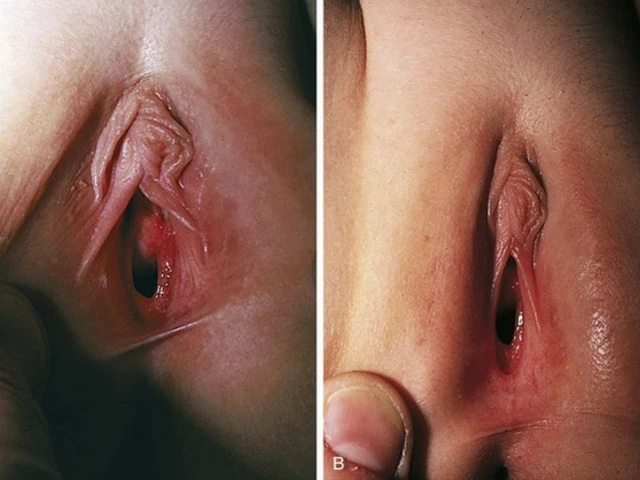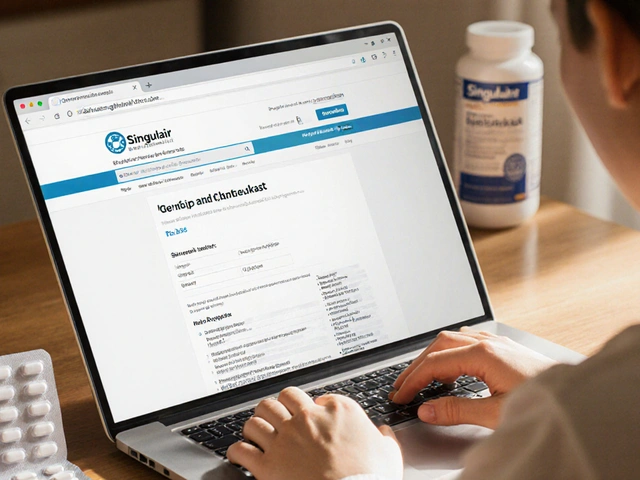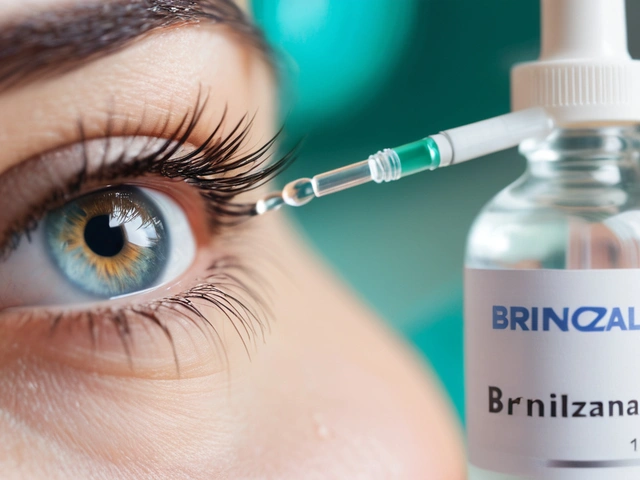Folic Acid Dosage Calculator for HIV Patients
Folic Acid Dosage Calculator
Key Takeaways
- Folic acid supplementation can correct folate‑deficiency‑related megaloblastic anemia in HIV‑positive individuals, but it does not address vitamin B12 deficiency.
- Dosage of 5mg oral folic acid daily for 4-6 weeks is recommended for therapeutic correction; lower 0.4mg daily is used for maintenance.
- Concurrent antiretroviral therapy (ART) may increase folate loss, making regular monitoring of blood indices essential.
- Assessment should include serum folate, vitamin B12, complete blood count, and CD4 count before starting supplementation.
- Patients with combined folate and B12 deficiency need a dual‑vitamin approach to avoid neurological complications.
Understanding the Players
Folic Acid is a synthetic form of vitamin B9 that the body converts into the active metabolite tetrahydrofolate. This co‑factor participates in DNA synthesis, amino‑acid metabolism, and red‑cell formation. When intake is insufficient, the bone marrow produces abnormally large, immature red cells-a hallmark of megaloblastic anemia.
Megaloblastic Anemia describes a group of blood disorders characterized by impaired DNA synthesis, leading to macro‑ovalocytes and hypersegmented neutrophils on the peripheral smear. The two most common nutritional causes are folate deficiency and vitamin B12 deficiency.
HIV/AIDS is a chronic infection caused by the human immunodeficiency virus, which progressively destroys CD4+ T‑cells, weakening immune defenses. People living with HIV often face malnutrition, drug‑induced nutrient loss, and opportunistic infections that increase the risk of anemia.
Antiretroviral Therapy (ART) comprises drug combinations that suppress viral replication, improve CD4 counts, and reduce AIDS‑defining events. Certain nucleoside reverse transcriptase inhibitors (NRTIs) interfere with folate metabolism, further predisposing patients to deficiency.
Vitamin B12 (cobalamin) is another B‑vitamin essential for myelin formation and red‑cell maturation. Deficiency presents with similar hematologic findings but adds irreversible neurological damage if untreated.
Why Folate Deficiency Happens in HIV/AIDS
Several mechanisms converge to deplete folate stores in HIV‑positive patients:
- Malabsorption: Chronic diarrhoea, intestinal opportunistic infections, and HIV‑associated enteropathy impair folate uptake.
- Increased Utilisation: Ongoing inflammation and rapid cell turnover demand more folate for DNA repair.
- Drug Interference: Zidovudine and other NRTIs compete with folate for cellular transporters.
- Poor Dietary Intake: Socio‑economic factors and food insecurity limit consumption of leafy greens and legumes, the primary natural sources.
These factors make routine folate assessment a standard part of HIV care, especially when anemia is detected.
Diagnosing Megaloblastic Anemia in the HIV Setting
Accurate diagnosis rests on a step‑wise laboratory work‑up:
- Complete Blood Count (CBC): Look for hemoglobin < 12g/dL (women) or < 13g/dL (men), mean corpuscular volume (MCV) > 100fL, and reduced reticulocyte count.
- Peripheral Blood Smear: Presence of macro‑ovalocytes and hypersegmented neutrophils confirms a megaloblastic picture.
- Serum Folate: Levels < 3ng/mL indicate deficiency; assays are inexpensive and rapid.
- Serum VitaminB12: Levels < 200pg/mL point to B12 deficiency; testing prevents mis‑directed folate therapy.
- CD4 Count & Viral Load: Provide context; low CD4 (<200cells/µL) often correlates with higher anemia prevalence.
When both folate and B12 are low, clinicians should address both deficiencies simultaneously to avoid neuropathy.

Therapeutic Use of Folic Acid
Guidelines from the WHO, CDC, and British HIV Association (BHIVA) converge on a two‑phase approach:
- Correction Phase: Administer 5mg oral folic acid once daily for 4-6weeks. Intramuscular 5mg weekly is an alternative for patients with malabsorption or severe vomiting.
- Maintenance Phase: After hematologic parameters normalize, reduce to 0.4mg daily (the standard nutritional dose) to sustain folate stores.
This regimen has shown a 70‑85% rise in hemoglobin within two weeks in HIV cohorts, while keeping side‑effects minimal.
Note: folic acid should not be given at high doses indefinitely without monitoring, as excessive folate can mask B12 deficiency and potentially worsen neurological outcomes.
Monitoring and Safety
Follow‑up labs are essential:
- Week 2: CBC and reticulocyte count - early response indicated by rising reticulocytes.
- Week 4: Serum folate - ensure levels > 5ng/mL.
- Month 3: Repeat B12 assay - confirm that B12 remains adequate.
- Every 6months: CD4 count and viral load - assess overall HIV control.
Adverse events are rare. Mild nausea may occur with oral tablets; switching to a liquid formulation can help. No known drug‑drug interactions between folic acid and standard ART regimens, but clinicians should watch for rare cases of renal tubular dysfunction with high‑dose folate in patients on tenofovir.
When Folate Alone Isn’t Enough
If anemia persists after the correction phase, consider these possibilities:
- Concurrent B12 Deficiency: Add 1000µg cyanocobalamin intramuscularly for 7days, then monthly.
- Iron Deficiency: Ferritin < 30ng/mL warrants iron supplementation.
- Bone Marrow Suppression from ART: Evaluate the NRTI component; dose reduction or substitution may be warranted.
- Chronic Disease Anemia: Inflammation‑mediated hepcidin rise may require erythropoiesis‑stimulating agents.
Practical Case Example
John, a 38‑year‑old man from Birmingham, was diagnosed with HIV two years ago and started on a tenofovir‑emtricitabine‑dolutegravir regimen. Routine labs revealed hemoglobin 10.2g/dL, MCV 108fL, and a peripheral smear with macro‑ovalocytes. Serum folate was 2ng/mL; B12 was 310pg/mL (borderline). The clinician started 5mg oral folic acid daily and scheduled a CBC at two weeks. By week 3, hemoglobin rose to 11.5g/dL, reticulocytes increased, and folate reached 6ng/mL. Maintenance switched to 0.4mg daily, and at three months John’s hemoglobin was 13.2g/dL with stable CD4 count of 520cells/µL. No neurological symptoms emerged, confirming that folate alone addressed his anemia.

Comparison of Folic Acid vs Vitamin B12 Supplementation
| Aspect | Folic Acid | Vitamin B12 |
|---|---|---|
| Primary Deficiency Indication | Low serum folate, macrocytic anemia, normal B12 | Low serum B12, macrocytic anemia, neurological signs |
| Typical Therapeutic Dose | 5mg oral daily (correction) → 0.4mg daily (maintenance) | 1000µg IM weekly for 4weeks → 1000µg monthly |
| Route of Administration | Oral preferred; IM for malabsorption | IM required for deficiency; high‑dose oral possible |
| Interaction with ART | No clinically significant interaction | None reported; monitor for peripheral neuropathy with ART |
| Risk of Masking Deficiency | High doses can mask B12 deficiency | Does not mask folate deficiency |
| Monitoring Parameters | Serum folate, CBC, reticulocyte count | Serum B12, methylmalonic acid, neurologic exam |
Practical Tips for Clinicians
- Screen all newly diagnosed HIV patients for anemia at baseline.
- Order both folate and B12 simultaneously; never assume folate deficiency alone.
- Educate patients on folate‑rich foods (spinach, lentils, fortified cereals) as adjuncts to therapy.
- Document the start date and dosage of folic acid in the patient’s ART chart to avoid duplicate prescribing.
- Re‑evaluate hemoglobin and MCV after 4 weeks; adjust dosage only if response is inadequate.
Frequently Asked Questions
Can I take over‑the‑counter folic acid tablets while on ART?
Yes. Standard 0.4mg tablets are safe with most ART combinations. Only high‑dose (5mg) regimens should be prescribed and supervised by a clinician.
What if my folate level improves but anemia persists?
Persistent anemia suggests another cause-most commonly vitaminB12 deficiency, iron deficiency, or ART‑related marrow suppression. Repeat the full work‑up and treat accordingly.
Is there a risk of folic acid toxicity?
Toxicity is rare. Very high doses (>10mg daily) over long periods may mask B12 deficiency and potentially worsen neurologic outcomes, so clinicians should keep doses within recommended limits.
Do I need to stop folic acid once my CD4 count rises?
No. Maintenance dosing (0.4mg daily) is recommended as long as the patient remains at risk for folate deficiency, which includes most HIV patients regardless of CD4 trends.
Can dietary changes replace folic acid tablets?
A folate‑rich diet supports long‑term health, but during active deficiency the rapid rise in serum levels needed to reverse anemia is best achieved with supplementation.
Next Steps for Patients and Providers
For clinicians, embed a folate test into the routine HIV monitoring schedule and keep a short‑term high‑dose folic acid protocol in the clinic’s formulary. For patients, ask about diet, report any persistent fatigue, and adhere to the prescribed supplementation plan. Regular follow‑up labs will confirm recovery and keep you ahead of potential complications.
By integrating folic acid thoughtfully into HIV care, you can tackle a common, treatable cause of anemia, improve quality of life, and keep the focus on long‑term viral suppression.




